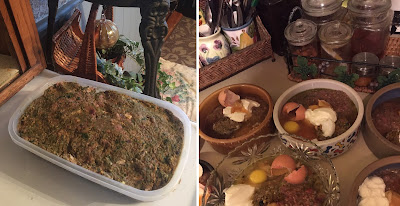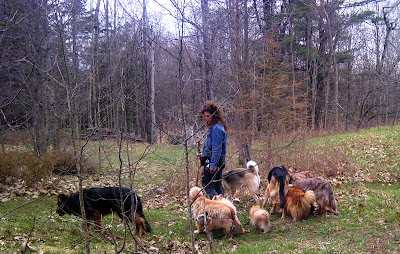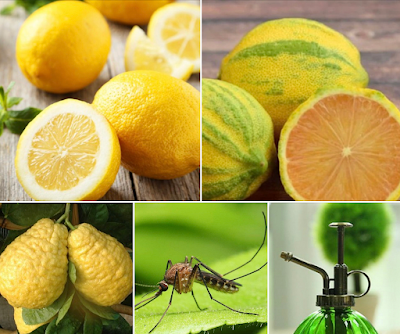Stress, Anxiety and Your Dog – Enable ‘Good Stress’ Response
Stress, Anxiety
and Your Dog – Enable ‘Good Stress’ Response
Stress, anxiety and your dog –
enable ‘good stress’ response for the mental and physical well-being of your
dog – and you too! First let’s talk about good stress
vs. bad stress, and then we will talk about the major building blocks for
enabling good stress response…
Good Stress - Is There
Such a Thing?
The answer is yes. There is a
specific term for this type of stress – it is called ‘eustress’
– the prefix ‘eu’ derived from the Greek word meaning well or good. It is
normal for our dogs to experience short-term (acute) stress. Short term (acute)
stress response and management has always been a part pf everyday life for
dogs, just as it has been for us humans. On a daily basis, a well-adjusted dog
may experience good stress multiple times a day. For example, a puppy learning
to go up or down stairs, a dog competing in agility or running to catch-up with
his/her friend, trying to figure out how to get a treat out of a Kong, learning
to be left alone for the first time, etc. Good stress provides the additional
energy required to: meet a challenge; to learn a new skill; adjust to changes
in routine, and environment; to perform at maximum output (mental and
physical), etc. These examples create short term stress, and are typically
experienced as part of normal everyday life. Good stress was part of your dog’s
ancestor’s daily life too - the daily hunt for food required good stress
response. Good stress hones physical and mental response to enable survival in
good times and times of danger. Good stress for us humans works the same way.
When Good Stress Goes
Bad
Let’s look at a few typical
examples. One - you have a puppy that is simply doing that normal puppy thing –
nipping your hands; your clothes; refusing to walk on his/her leash; won’t give up a toy or other object; gets into a
minor ‘disagreement’ with a pack-mate, etc. Your
response to your pup’s behaviour may be one or a combination of the following:
you get tense, nervous, frustrated or otherwise upset, and are unable to
provide the direction needed to calm your dog, and yourself. Two - you leave
your dog alone in the house for the first time, and you do so with a sense of
guilt and discomfort. Three - your dog experiences a thunderstorm for the first time - he/she becomes
startled. Four - your dog refuses to eat a meal and you start to fuss. Five -
you move to a new home and feel stressed during, and after the move - your dog
senses your stress and is ‘uncomfortable’ in the new home. Six – you take your
dog to the dog park and another dog displays or acts aggressively to your dog,
no physical damage occurred but you and your dog are ’shook-up’ by the
experience; or worse if your dog has suffered actual physical harm – you leave
the dog park upset. All of these situations can create psychological
trauma leading to long-term stress (chronic stress). To avoid the development of chronic stress you must know how
to create and maintain a good stress response in yourself and your dog.
Chronic stress is an inflammatory
condition that adversely effects mental and physical well-being, reducing
quality of life and can shorten life-span.
What You Can Do to
Support Good Stress Response
Choose a holistic approach that
considers all of the factors - major and minor, that enable a ‘good’ stress
response, vs. a ‘bad’ stress response. To understand how we can best support
good-stress response we need to keep in mind factors that contribute to good
and bad stress-reactivity. These factors include:
- Inherited and acquired traits
- Environmental influences – acute and long-term (animate – example your influence on your dog, other dogs influence on your dog, etc.), inanimate – example extreme weather conditions)
- Previously conditioned behaviour – for example your dog has learned to be frightened of thunder storms, fears going to the veterinarian, etc.
- Communication – for example your ability to communicate clearly to your dog, and understand what your dog is communicating
- Diet and health regimen – both play a large supporting role in physical and mental health
- Physical and mental health – the state of yours and your dog’s
- Psychology – human and canine as pertains to species and the individual human and canine, and the quality of interpretation – read here for an example
- Emotional intelligence and physical capacity – as pertains to the individual dog, and the individual human, as influenced by societal beliefs, which may acts as constraints and limitations.
Good Communication vs.
Misaligned Communication
Our emotions drive our thoughts, and
our thoughts drive our body language. When we are not working to align these
three components of communication and expression - our emotions take over. When
this occurs, we are not grounded, and we are not in a state of ‘normal’; we are
in a state of heightened reactivity/arousal. We may be nervous, tense, anxious,
insecure, fearful, frustrated, angry – reactive. When this occurs, we have
nothing new to contribute to the situation, we are simply reinforcing the
unwanted, unhealthy behaviour our dog is experiencing. We are leading by
example – the wrong example. To engender a better response in our dogs, we must
first achieve a better response within ourselves. We are human. We must accept
that we can never be perfect. We must accept that we are creatures of emotion -
but within that, we must also learn to preserve and operate from a place of
patience, logic and empathy.
Enabling Good Stress
Response from the Inside Out
In partnership with managing how we respond
to situations we should also review our dog’s diet, and health regimen. Optimal
physiological health plays an important role in ‘good’ stress response. Ours
and our dog’s reaction to stress is effected by conditioning, by the health of
our body and our brain. If the food your dog consumes does not support good:
gastrointestinal function, glandular function, and good brain function - the
ability to cope with stress is adversely affected. Real food – whole foods, raw
foods, minimally processed foods (not highly processed food), combined with
herbs and nutraceuticals form the basis of a diet that supports good physical,
physiological and mental health. If you must feed your dog highly processed
food (i.e. dry dog food) make sure you add some basic health supporting items
to the daily diet. Consider adding some real meat and bone broth to your dog’s daily diet. Add some
good quality Omega-3 - no dry dog food provides sufficient omega-3. Fish
oil sourced from wild or wild caught deep, clean-water fatty fish;
or organic hemp oil are good choices. Add a good-source of vitamin C – most
vitamin supplements are sourced from China, and are contaminated with heavy
metals and other toxins. I prefer vitamin C obtained from eating real food,
herbs and nutraceuticals. Organic coconut oil offers many benefits. Look after your
dog’s gastro intestinal flora by adding some real, fresh-food sourced probiotics. Probiotics in dry dog food are dead and offer no
health benefit. Raw unpasteurized honey is also a good source of
prebiotics and probiotics (don’t give raw honey to dogs that are 12 months of
age or under). Fresh pureed papaya is an excellent source of digestive enzymes.
You can also consider adding some
dog-safe real foods that are high in tryptophan, for example: pumpkin seeds,
apple, banana, free-range eggs, free-range turkey, kelp, tart red cherries and
wild Alaskan salmon. Be careful to use kelp sourced from clean-uncontaminated
wild open waters.
There are some very good pre-blended
homeopathic, as well herbal tonics that can be used to help calm an adversely
stressed dog. The following are a few important things to keep in mind when
thinking of using these tonics. These tonics are best used as a secondary
support in combination with; a properly designed diet, and behavioural
well-grounded mentoring. While there are some very good quality tonics, there
are also many that contain inappropriate, inflammatory and toxic ingredients –
choose wisely. Scrutinize the ingredients. Organic chamomile and ginger are two
readily available herbs that can be added to food in tea or powder from.
If your dog has a medical health
issue or is on any type of conventional drug(s), make sure you check all new
items you add to the diet (herbs, nutraceuticals, foods) for interactions with
drugs and your animal’s health condition.
Reset Yourself - Reset
Your Dog
If your dog has become conditioned
to ‘bad’ stress reactions – i.e. to thunder storms, people
other dogs, being left alone, vehicle travel, etc.; you must start the process
of change within yourself. Examine how you feel when about to enter a situation
in which your dog normally gets ‘bad’ stressed. If you are anticipating ‘bad’
stress, if you are anxious, tense, frustrated or otherwise emotional you are
directing your dog. If you are grounded, if you feel normal, well-adjusted you
can then begin to work with your dog to un-condition ‘bad’ stress reactions.
This will need to be done in tandem with techniques to further direct the
situation. You must take over all decision making - not allow your dog to decide
what he/she should do. For example a dog that has thunder storm anxiety may
react by pacing, and hiding, then getting back-up to pace, and look for another
hiding spot. Making these decisions is stressful for your dog – if he/she knew
what to do she would not be anxious. Take over for your dog. Decide where your
dog should lie down, and guide him/her to that spot, and communicate the
‘down’. If your dog gets up, don’t be annoyed – be grounded, be normal. Simply
direct your dog back to the spot you selected and direct him/her to lie down.
Dogs generally have more patience that their human. Patience in this case can be defined as having
the patience to wait quietly, or having the determination to persist until
he/she has obtained what he/she wants. Persistence and determination are part
of being patient. It is necessary for the human to match and exceed the dog’s
patience – this is how respect is earned. Pure logic – if you want another
being to do something, to be something you need to be that thing first,
yourself. This is leading by example, that is true leadership, and that is pure logic. I always say
‘dogs love logic more than humans’. Dogs do so because they are perceptive.
If your dog is ill, or grieving the
loss of a loved human, or animal companion - follow the same rules provided
above.
Build Confidence
Don’t ever feel sorry for your dog –
sympathy is not confidence building. Feel empathy instead, and let that feeling
compel you to provide solid leadership to your dog. Dogs are perceptive
manipulators of human emotion. Dogs do learn how to emotionally pressure
humans. Be aware of this, marvel at the intelligent capacity of your dog - but
do not let the pressure alter your focus. Be more persistent than your dog,
stay grounded and firm. Focus on what your dog needs rather than on the
patterns of the past.
When you truly lead by example – patiently, persistently without guilt and other destabilizing emotions, without punitive force, and
with empathy; you become a stabilizing presence, a grounded presence. With this
you may earn the right to have your dog’s attention and respect, even in the
most stressful of situations.
The Bottom Line
We cannot change the genes which are
dog has inherited, we can’t change what our dog has experienced in the past,
but we can have a substantial impact on the present and the long-term. The sum
of poor communication and bad diet is anxiety and stress for ourselves and for
our dogs. So what is it that we need to do to turn things around? We need to
take the time to slow down, be consciously deliberate leaders for our dogs, and
support our dogs’ good mental function from the inside-out.
Be The Change, Lead
The Change
By carefully following the steps
above you can self-regulate yourself, break your own ‘bad’ habits, and
preconditioned responses - by doing so you set the foundation to enable good
stress response in your dog.
Holistic Diet, Nutrition, Wellness Services Tailored to Your Individual Dog and Cat
For information about my holistic diet, nutrition, wellness services visit my:
Maintain good health | Address acute and chronic health issues | Pre and post surgery support and recovery
My holistic wellness services are available worldwide via video consultation.
🌎 USA | Canada | UK | Europe | Australia | New Zealand | Asia | South and Central America | Africa | UAE
📱 FaceTime | Facebook | Skype | WhatsApp
Holistic Behavioral Services For Your Dog
For information about my holistic behavioral services visit my:
For dogs of all ages, sizes and breeds
My holistic behavioral services are available locally in-person and worldwide via video session.
🌎 USA | Canada | UK | Europe | Australia | New Zealand | Asia | South and Central America | Africa | UAE
📱 FaceTime | Facebook | Skype | WhatsApp
Affiliations to Companies
✓ None.
✓ I don't sell food or supplements.
✓ I'm not aligned with any companies.
✓ None.
✓ I don't sell food or supplements.
✓ I'm not aligned with any companies.
Article and graphics by Karen Rosenfeld










